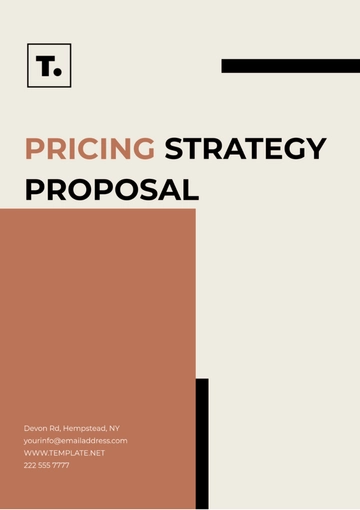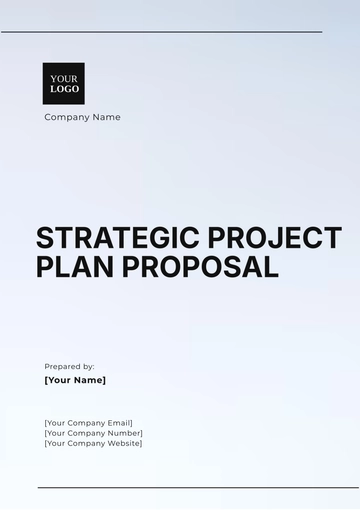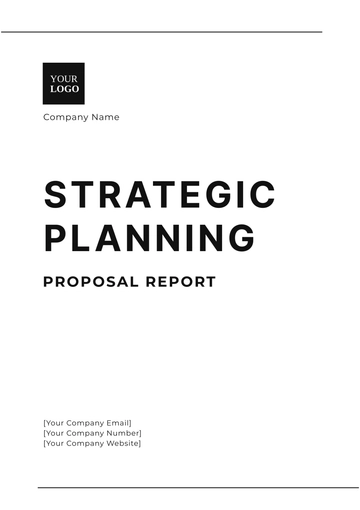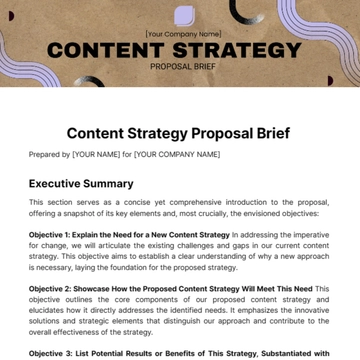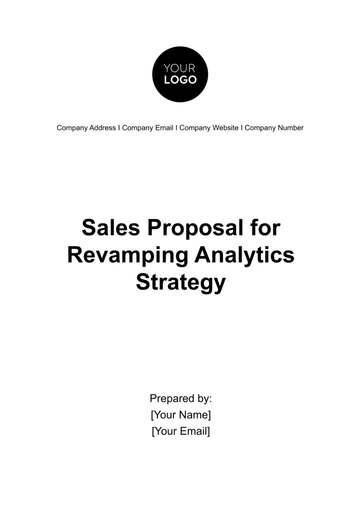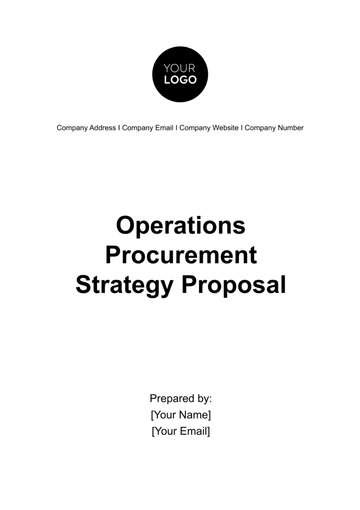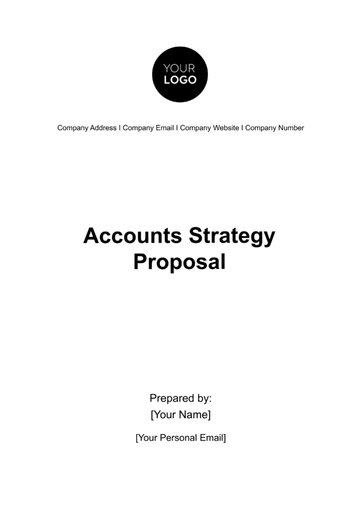Free Strategic Project Plan Proposal
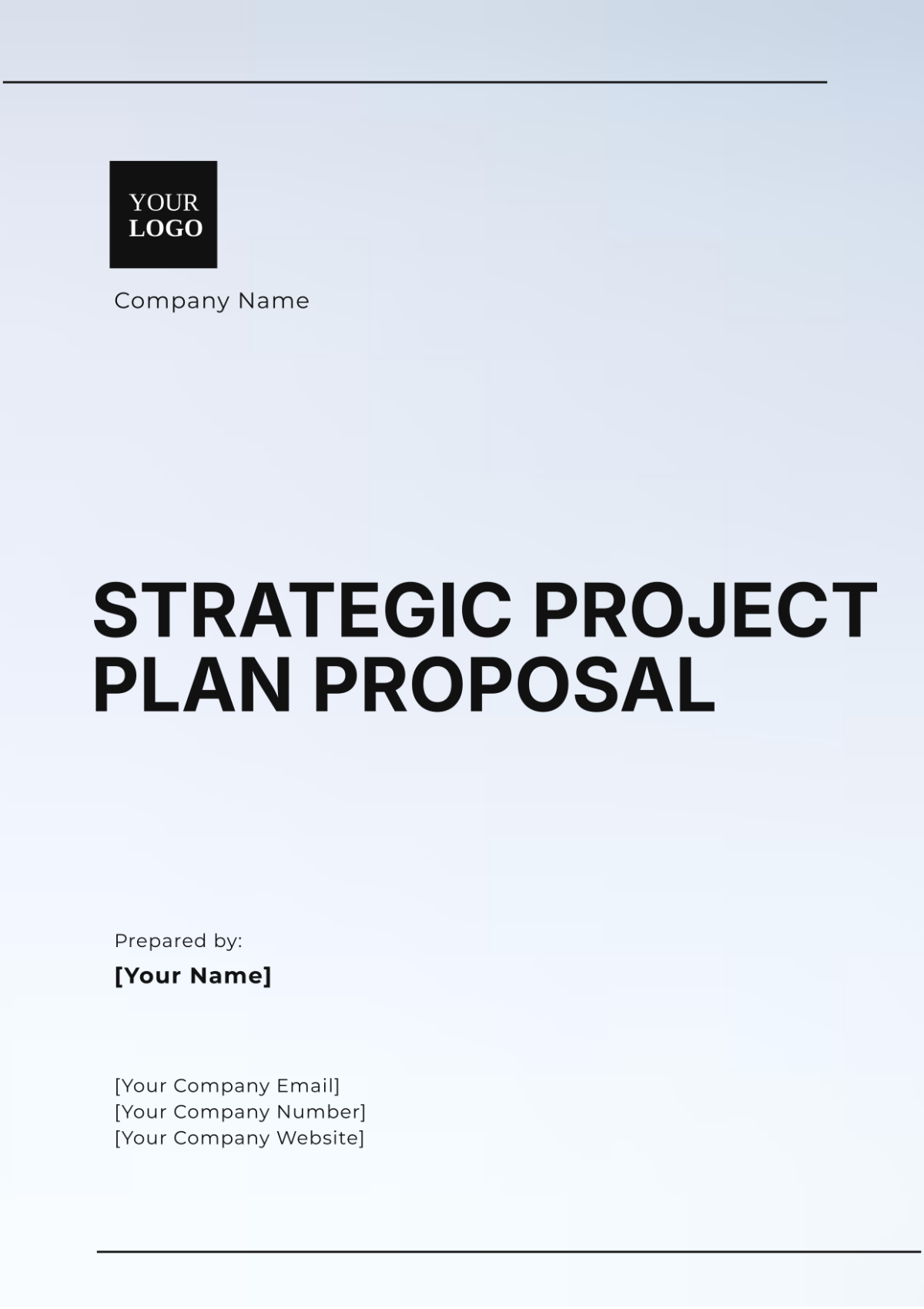
1. Executive Summary
The [Your Company Name] project aims to create a nationwide, next-generation smart energy grid that will transition the country to 95% renewable energy by 2060. The project will leverage cutting-edge technologies such as AI-driven energy management, advanced solar and wind storage, and decentralized energy hubs. This initiative is a part of Future Innovations Inc.'s mission to lead in sustainability and future-proof infrastructure.
Objective: To deploy an advanced renewable energy grid that covers 80% of the population by 2060.
Key Deliverables: Smart grid infrastructure, energy storage facilities, decentralized hubs, and renewable energy sources.
Timeline: March 2050 – December 2060.
Budget Estimate: $20 billion over 10 years.
Stakeholders: Government agencies, private energy firms, technology partners, and local communities.
2. Project Goals and Objectives
The project will establish a sustainable, efficient energy infrastructure that reduces reliance on fossil fuels.
Primary Goal: Achieve 80% renewable energy coverage by 2060.
Secondary Goals: Reduce energy costs for consumers by 30%, integrate decentralized energy storage, and cut greenhouse emissions by 75%.
Success Criteria: Successful deployment of grid infrastructure and sustainable energy sources across 70% of urban areas by 2055.
3. Project Scope
The project will focus on the design, development, and deployment of a smart renewable energy grid.
In Scope:
Implementation of solar, wind, and hydroelectric sources.
Integration of AI-driven energy management systems.
Development of decentralized energy hubs.
Out of Scope:
Nuclear energy solutions.
Transportation electrification.
4. Project Deliverables
The following deliverables will be completed during the project lifecycle:
Smart Grid Infrastructure: Establishment of the physical grid network using cutting-edge technology.
Energy Storage Facilities: Creation of battery storage systems for renewable energy retention.
Decentralized Energy Hubs: Build decentralized, small-scale power stations in rural and urban areas.
5. Project Milestones
Milestone | Description | Date |
|---|---|---|
Milestone 1 | Design phase completed | December 2050 |
Milestone 2 | Initial grid infrastructure deployment | July 2052 |
Milestone 3 | AI-driven management system operational | February 2054 |
Milestone 4 | 50% of decentralized hubs completed | November 2056 |
Milestone 5 | 70% coverage of urban areas | June 2058 |
Milestone 6 | 80% renewable energy coverage achieved | December 2060 |
6. Project Timeline
Task | Start Date | End Date | Dependencies |
|---|---|---|---|
Grid Design | March 2050 | December 2050 | None |
Initial Grid Deployment | January 2051 | July 2052 | Design Completion |
AI System Development | August 2052 | February 2054 | Grid Deployment |
Storage Facility Construction | March 2054 | December 2055 | AI System |
Urban Area Coverage | January 2056 | June 2058 | Grid Operational |
7. Resources Required
Personnel:
Project Manager: Oversees the overall project and timelines.
AI Specialists: Develop and implement AI-driven management.
Energy Engineers: Responsible for designing and deploying energy grid.
Construction Teams: Build storage facilities and infrastructure.
Technology:
AI energy management software.
Advanced renewable energy storage systems.
Decentralized energy hubs.
Materials:
Solar panels, wind turbines, and energy storage systems.
8. Risk Management
Risk Description | Probability | Impact | Mitigation Plan |
|---|---|---|---|
Delays in Grid Construction | Medium | High | Early contractor selection, contingency timelines. |
Cost Overruns | Low | High | Detailed budget control and regular audits. |
Technology Failures | Low | Medium | Comprehensive testing of AI systems before rollout. |
9. Budget Estimate
Expense Category | Estimated Cost |
|---|---|
Personnel Costs | $5 billion |
Technology/Equipment | $7 billion |
Construction and Materials | $6 billion |
Contingency Fund | $2 billion |
Total | $20 billion |
10. Stakeholders and Roles
Stakeholder Name | Role | Responsibility |
|---|---|---|
Government Agencies | Regulatory Support | Ensure regulatory compliance. |
Private Energy Firms | Technology Partner | Provide advanced energy technology. |
Local Communities | Beneficiary | Participate in community-based energy projects. |
11. Communication Plan
Communication Type | Frequency | Audience | Owner |
|---|---|---|---|
Status Updates | Weekly | Team, Stakeholders | Project Manager |
Project Review Meetings | Monthly | Leadership, Sponsors | Project Manager |
Risk Reports | Quarterly | Risk Management Team | Risk Manager |
12. Approval and Sign-Off
Name | Role | Signature | Date |
|---|---|---|---|
John Doe | Project Sponsor |
| March 1, 2050 |
Jane Smith | Project Manager |
| March 1, 2050 |
- 100% Customizable, free editor
- Access 1 Million+ Templates, photo’s & graphics
- Download or share as a template
- Click and replace photos, graphics, text, backgrounds
- Resize, crop, AI write & more
- Access advanced editor
Create a robust strategic project plan with this editable and customizable template from Template.net. Perfect for detailing goals, timelines, and resource allocation. Easily editable in our AI Editor Tool, it ensures your strategic vision is communicated effectively and professionally.
You may also like
- Business Proposal
- Research Proposal
- Proposal Request
- Project Proposal
- Grant Proposal
- Photography Proposal
- Job Proposal
- Budget Proposal
- Marketing Proposal
- Branding Proposal
- Advertising Proposal
- Sales Proposal
- Startup Proposal
- Event Proposal
- Creative Proposal
- Restaurant Proposal
- Blank Proposal
- One Page Proposal
- Proposal Report
- IT Proposal
- Non Profit Proposal
- Training Proposal
- Construction Proposal
- School Proposal
- Cleaning Proposal
- Contract Proposal
- HR Proposal
- Travel Agency Proposal
- Small Business Proposal
- Investment Proposal
- Bid Proposal
- Retail Business Proposal
- Sponsorship Proposal
- Academic Proposal
- Partnership Proposal
- Work Proposal
- Agency Proposal
- University Proposal
- Accounting Proposal
- Real Estate Proposal
- Hotel Proposal
- Product Proposal
- Advertising Agency Proposal
- Development Proposal
- Loan Proposal
- Website Proposal
- Nursing Home Proposal
- Financial Proposal
- Salon Proposal
- Freelancer Proposal
- Funding Proposal
- Work from Home Proposal
- Company Proposal
- Consulting Proposal
- Educational Proposal
- Construction Bid Proposal
- Interior Design Proposal
- New Product Proposal
- Sports Proposal
- Corporate Proposal
- Food Proposal
- Property Proposal
- Maintenance Proposal
- Purchase Proposal
- Rental Proposal
- Recruitment Proposal
- Social Media Proposal
- Travel Proposal
- Trip Proposal
- Software Proposal
- Conference Proposal
- Graphic Design Proposal
- Law Firm Proposal
- Medical Proposal
- Music Proposal
- Pricing Proposal
- SEO Proposal
- Strategy Proposal
- Technical Proposal
- Coaching Proposal
- Ecommerce Proposal
- Fundraising Proposal
- Landscaping Proposal
- Charity Proposal
- Contractor Proposal
- Exhibition Proposal
- Art Proposal
- Mobile Proposal
- Equipment Proposal
- Student Proposal
- Engineering Proposal
- Business Proposal

